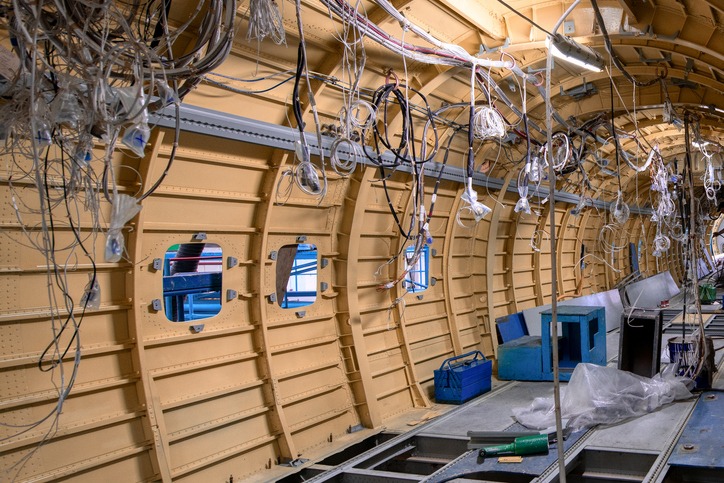Every team contributing to an aircraft’s design, manufacture, and usage requires excellence and accuracy for safe and efficient flying.
Extreme durability is required for cable and electrical components used in the aircraft sector. To survive the wear and tear that comes with aircraft transportation, the wires must be constructed to withstand many takeoffs, landings, and the constant operation of mechanical components.
Aircraft wiring is a complex subject that’s more important than ever. Today’s aircraft feature glass cockpit displays, GPS receivers, autopilots, backup batteries and busses, electric trim and flap motors, powered headsets, and more.
Wiring is exposed to harsh conditions like vibration, moisture, and heat. It also has to endure physical installation stress.
Insulation
Insulation plays a significant role in aircraft wiring, especially regarding safety and compliance with standards. It protects the individual wires or cables in a cable assembly and prevents current from contacting other conductors, reducing the risk of fire or electric shock.
Electrical insulation materials have various properties selected according to their application. Among these, arc resistance is a crucial consideration.
Moreover, heat-aging behavior must be considered when selecting wire insulation for aerospace applications.
Many insulation materials are available, including hydrocarbons, halogenated polymers, nitrogen-containing polymers, and polyesters.
Connectors
When it comes to aircraft wiring, it’s essential to understand the importance of connectors. Not only do they provide a secure electrical connection, but they also prevent crosstalk and jitter in signal transmission.
Connectors can be made from many different types of materials. Some are made from metal, such as stainless steel or copper. Others are made from non-metallic materials, such as plastics.
Modern planes have very complicated electrical systems that must be appropriately wired. These include avionics, autopilots, backup batteries and busses, electric trim and flap motors, ADS-B receivers, powered headsets, multiple power plugs, and many more.
The backshell connectors are one of the most important concerning aircraft wiring. These components attach to the back of the connector and help guide the wires or cables into the connector.
Wire Gauge
Regarding aircraft wiring, the wire gauge is a significant factor. It is because wires used in aircraft come in contact with various environmental factors. For example, they may be exposed to salt in marine environments, the oil that runs through the aircraft’s engines, and other fluids that can cause damage to a wire.
When choosing wire gauges, it is essential to select the correct size based on the electrical load that is expected to be carried by the wire. It is done by calculating the resistance of the wire.
Wire Types
When it comes to aircraft wiring, there are various wire types. Each type has its characteristics and should be used when sizing and installing electrical devices.
Wires comprise two parts: an insulating layer and a conductor. The insulating layer is non-conductive and helps to prevent electricity from escaping, while the conductor is the conductive part that connects it to the device.
The insulation is what determines whether the wire will be able to resist heat and other factors that can degrade it. It is why choosing wire with good heat and corrosion resistance is essential.
Wiring is also subject to several factors contributing to its aging, including vibration, moisture, and physical installation stresses. These factors vary significantly as a function of location within the aircraft and have been shown to affect wiring differently.

